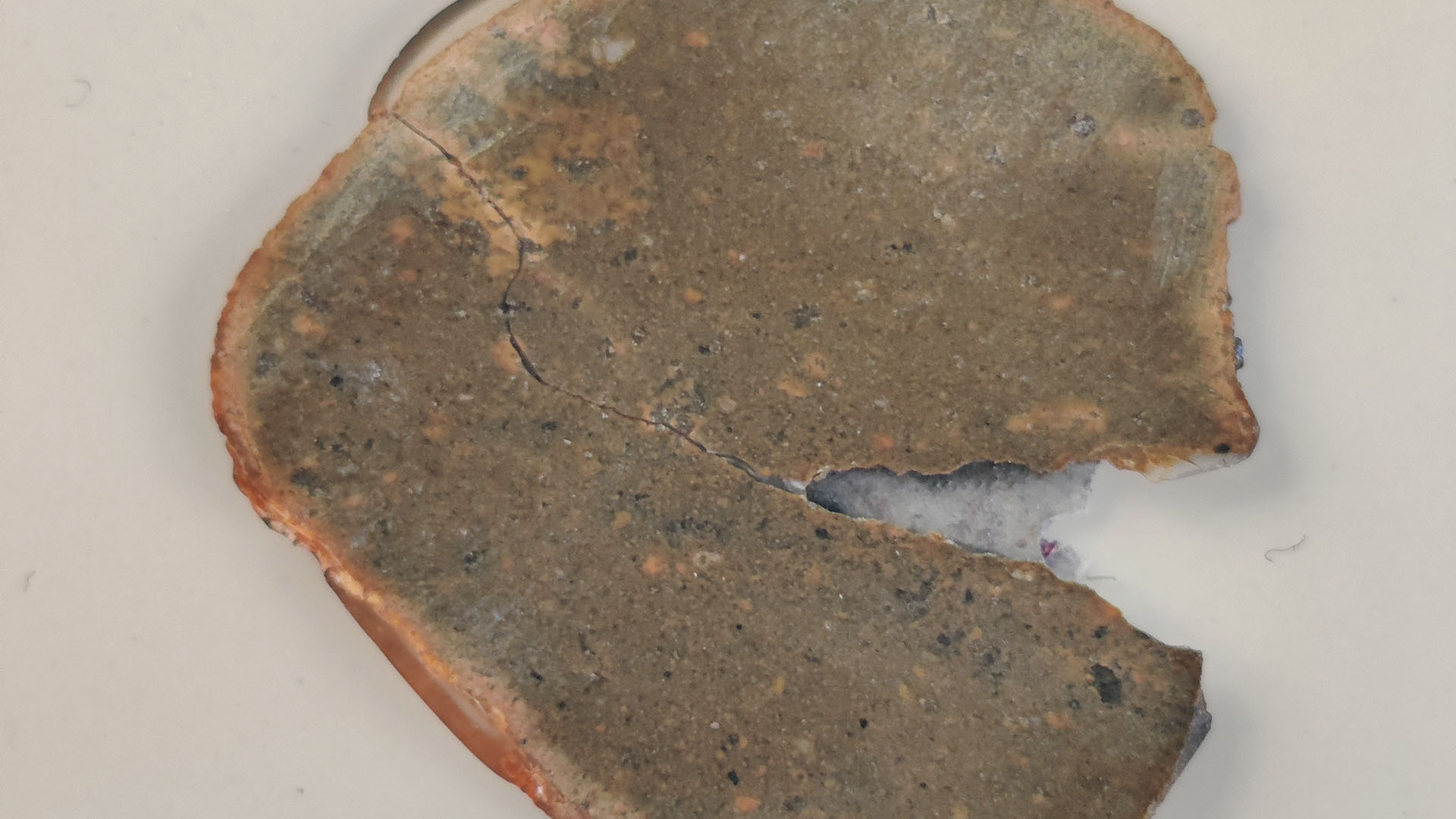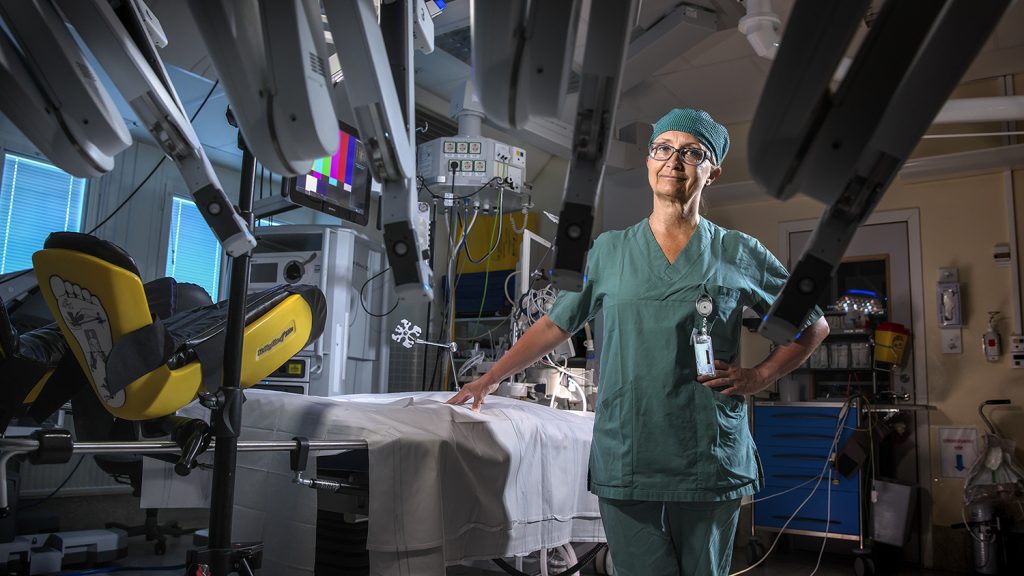Pernilla Dahm-Kähler researches cancers of the female reproductive system, specifically ovarian, uterine and cervical cancer. She is also a surgeon, chief medical officer and chief of department at Sahlgrenska University Hospital in Gothenburg.
In the operating room, she operates manually and with the help of a robot. As if that wasn’t enough, she’s also become a pioneer in uterine transplantation.
– Yes, a lot happens sometimes, she says. But I think everything is very important and we see that our efforts are paying off. And the parts fit together – I don’t think I could be a researcher on my own. When I sit and talk to patients, I regain my energy. And when I work. I love the craft. This energy is required to handle other less rewarding tasks – such as driving organizational changes.
Wanted surgery center
A decade ago, Pernilla Dahm Kaller stood up to healthcare politicians in Västra Götaland and declared that the region should focus its surgery in order to ovarian cancer.
– Such a difficult surgery should not be spread over many hands. I wasn’t the first to point this out, but it was the first time we had stats to point to. Two years earlier, we started the National Quality Registry for Gynecological Cancer, and it is now clear in black and white that results differed between our clinics.
It’s an important change, especially for women in small towns
Politicians listened, and even though it meant a cost of several million, Pernilla Dham Kahler passed the demands of medical school. Since 2011, all advanced ovarian cancer surgeries have been concentrated in Västra Götaland in Sahlgrenska. This resulted in a higher survival rate and more patients were considered tumour-free after surgery. Corresponding centralization has now been implemented in most regions of Sweden.
– It’s an important change, especially for women in small towns, says Pernilla Dahm Kahler. Where you live should not determine your chances of survival.
Good to survive
But this disease is still the most dangerous type of gynecological cancer. According to recent follow-up, Västra Götaland centralization increased the median survival of those considered tumor-free after surgery from less than five years to just over six years. For women who had residual tumors after surgery, median survival increased from just over two years to just over three years.
– We still have a lot to do, and there are many different types of research going on. My research is about analyzing what we do clinically and seeing what we can do best and whether we can identify groups that need a little different treatment.
It’s not entirely true that it doesn’t cause symptoms, but the symptoms are vague and not specific to cancer.
A big problem is that the disease is often detected at a late stage, when it spreads in the body.
– It’s not entirely true that it doesn’t cause symptoms, but the symptoms are vague and not specific to cancer. This means that many people are waiting to get treatment, and that it takes time before they receive the correct diagnosis.
Find more gynecological cancers
Pernilla Dehm-Kahler also conducts research on uterine and cervical cancer.
– There, the prognosis is much better, and many patients survive the disease. We’re looking at things like how surgical interventions can be made more gentle, whether there are any factors that increase the risk of recurrence, and what the prognosis looks like for some at-risk groups. Older adults and women with a high BMI have an increased risk of developing uterine cancer (cancer of the body of the uterus), and fortunately, we see that both groups do excellently with surgery.
Robotic surgery as an aid
Her research also includes evaluating robotic surgery. Pernilla Dahm-Kähler is one of those surgeons who nowadays alternates between manual and robotic-assisted work.
– Robots have been around for more than a decade, and it’s not a new thing anymore but it’s part of our clinical routine. But for patients, it can seem like a scary science fiction, so I’m always eager to explain what it means.
Quietly and steadily, I slip next to the vein and select the lymph nodes in a safe manner.
She confirms that robotic surgery is an evolution of peephole surgery. Not some scalpel-equipped machines that do some surgery on their own, just a toolbox stretched out at the tip of thinner peephole tools.
– When I use the robot, it is as if my head is inside the patient’s abdomen. I can turn my head the way I want and get perfect lighting. Quietly and steadily, I slip next to the vein and select the lymph nodes in a safe manner.
Surgical techniques complement each other
Today, the robot is routinely used in uterine cancer and is being evaluated in cervical cancer. They are of course also used in other surgeries, including prostate cancer. But robots are unlikely to take control of operating rooms.
Join and support cancer research.
Give the gift of vitality
– She says open surgery, peephole surgery, and robotic surgery complement each other. The robot is useful in confined spaces but has a harder time giving you a good overview when there is a lot of tumor. To orient myself in the spread of abdominal cancer, I need to open up the patient, see and feel.
Can focus on research
Although Pernilla Dehm Kaller values working with patients, she is grateful that she no longer needs her in the clinic every day.
– Now I divide my time between clinic and research. In the past, research was something we had to do in the evenings and weekends. It is a relief that we don’t get like this anymore, that we can devote time to work focused with research material and we can, for example, enlist the help of a statistician.
– It was the first research grant from the Cancer Foundation that made it possible for me and my PhD students. It also eventually led to funding from the university.
Pernilla Dahm Color
… in 2005 he became the first doctor in Sweden with a special subspecialty in gynecological oncology. Since 2017, she has been a lecturer at the University of Gothenburg. She was recently named Operations Director of the Year by the Western Regional Cancer Center.
From the Cancer Foundation, Pernilla Dahm-Kähler received SEK 500,000 annually during 2018-2020 for the project. “Towards Excellence in Gynecological Cancer Care”. In November 2020, I received a grant from the Cancer Foundation in the amount of SEK 600,000 per year 2021-2022 to continue working with the same project.

“Extreme tv maven. Beer fanatic. Friendly bacon fan. Communicator. Wannabe travel expert.”






More Stories
Cloud-based personal health record with AI – is it safe?
Warning of sharp increase in TBE in Vastmanland –
Study: The size of a snack determines how much you eat